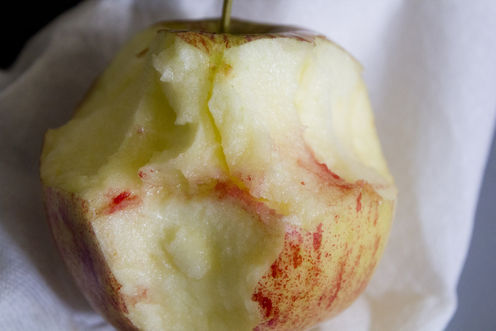
Bleeding gums are very common but that doesn’t mean you should ignore them. They’re usually a sign of gum (periodontal) disease.
If treated in its early stages, periodontal disease can be easily reversed. But more advanced and severe forms of the disease can result in tooth loss, require complex long-term treatment and are associated with a higher risk of diabetes and other chronic diseases.
Most people will experience some degree of periodontal disease in their lives. Australian oral health surveys indicate that, at any one time, one in four adults have moderate to severe periodontal disease. The prevalence of periodontal disease increases with age, with more than half of Australians over the age of 65 having moderate to severe forms.
In its milder form, periodontal disease is known as gingivitis. Gingivitis occurs when plaque builds up along the gum line where the gum attaches to the tooth. If not removed, the bacteria that make up the plaque provoke an inflammatory reaction in the gum tissue.
The first sign of unhealthy gums is bleeding during or after brushing your teeth. Gingivitis typically results in reddened gums that appear swollen, shiny and smooth. Healthy gums, on the other hand, are coral pink and slightly stippled like orange peel.

In cases of gingivitis, gum health can be restored by removing plaque with thorough daily brushing and regular flossing. Toothpaste acts as a gentle abrasive, assisting in plaque removal. It is important to use a fluoride toothpaste to help prevent that other common form of oral disease, tooth decay.
While some people promote the use of salt water on a toothbrush to help remove plaque, the evidence firmly shows toothpaste is effective at removing plaque and, when it contains fluoride, at reducing tooth decay.
When brushing your teeth, be sure to brush gently along the gum line where the tooth meets the gum tissue. If bleeding persists, a dentist or hygienist may need to remove plaque that home cleaning can’t reach.
Gingivitis can progress to chronic periodontitis, particularly if you’re not brushing and flossing regularly. Chronic periodontitis occurs when persistent inflammation causes the alveolar bone (which forms the tooth socket that supports the tooth) to break down.
This also causes gums to recede. This is where the term “long in the tooth” comes from – as more of the tooth becomes visible, it appears as though it is lengthening. Without an adequate supporting bone, teeth become loose. At this point the condition often becomes painful.
Chronic periodontitis is currently treated with an intensive cleaning regime and, in some cases, gum surgery.
Unfortunately, once the pathogenic bacteria become established they are very difficult to remove. People with chronic periodontitis often require regular and ongoing professional dental treatment to prevent the disease from progressing.
Our colleagues at the University of Melbourne Oral Health CRC are developing a treatment for periodontitis by targeting one of its key pathogens, Porphyromonas gingivalis. Progress has already been made, with the latest findings looking very promising.
While inflammation arising from the presence of plaque is by far the most common cause of bleeding gums, it can be symptomatic of other conditions including diabetes, some blood disorders and – although now uncommon – scurvy.
Some misconceptions about bleeding gums and tooth loss do persist. For instance, it is still occasionally said that “a tooth is lost for every baby”.

This certainly need not be true. While the hormonal changes caused by pregnancy will make gums more susceptible to the effects of plaque (and therefore be more likely to bleed), pregnancy per se will not cause periodontal disease or tooth loss arising from it.
There is also a commonly held view that bleeding gums are a part of everyday life and to be expected. This is also not the case. Bleeding gums are usually a sign of disease.
The good news is that most periodontal disease is preventable through sound oral hygiene measures, coupled with regular dental check-ups. Your dental health professional can give you advice on how to brush and floss most effectively.
Mike Morgan receives funding from NHMRC. He is Program Leader of the Oral Health Cooperative Research Centre, which brings together scientists, clinicians and industry to advance the prevention, diagnosis, treatment and management of oral diseases. It is funded through the Australian Government’s Cooperative Research Centres program and the contributions of its research partners. He is Director of the Australian Dental Council, Board member of VicHealth, Principal Oral Health Advisor, Dental Health Services Victoria and a member of the Australian Dental Association.
Stuart Dashper receives funding from the National Health and Medical Research Council and the Cooperative Research Centre scheme
